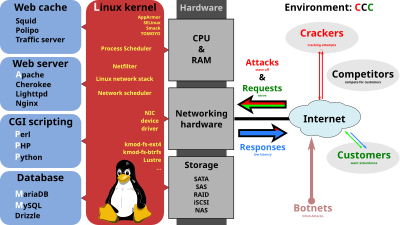White paper on Working with MySQL
COURTESY :- vrindawan.in
Wikipedia
MySQL (/ˌmaɪˌɛsˌkjuːˈɛl/) is an open-source relational database management system (RDBMS). Its name is a combination of “My”, the name of co-founder Michael Widenius’s daughter My, and “SQL”, the abbreviation for Structured Query Language. A relational database organizes data into one or more data tables in which data may be related to each other; these relations help structure the data. SQL is a language programmers use to create, modify and extract data from the relational database, as well as control user access to the database. In addition to relational databases and SQL, an RDBMS like MySQL works with an operating system to implement a relational database in a computer’s storage system, manages users, allows for network access and facilitates testing database integrity and creation of backups.

MySQL is free and open-source software under the terms of the GNU General Public License, and is also available under a variety of proprietary licenses. MySQL was owned and sponsored by the Swedish company MySQL AB, which was bought by Sun Micro systems (now Oracle Corporation). In 2010, when Oracle acquired Sun, Widenius forked the open-source MySQL project to create MariaDB.
MySQL has stand-alone clients that allow users to interact directly with a MySQL database using SQL, but more often, MySQL is used with other programs to implement applications that need relational database capability. MySQL is a component of the LAMP web application software stack (and others), which is an acronym for Linux, Apache, MySQL, Perl/PHP/Python. MySQL is used by many database-driven web applications, including Drupal, Joomla, phpBB, and WordPress. MySQL is also used by many popular websites, including Facebook, Flickr, MediaWiki, Twitter, and YouTube.
MySQL is written in C and C++. Its SQL parser is written in yacc, but it uses a home-brewed lexical analyzer. MySQL works on many system platforms, including AIX, BSDi, FreeBSD, HP-UX, Arca OS, e Com Station, IBM i, IRIX, Linux, macOS, Microsoft Windows, NetBSD, Novell Net Ware, OpenBSD, Open Solaris, OS/2 Warp, QNX, Oracle Solaris, Symbian, Sun OS, SCO Open Server, SCO Unix Ware, Sanos and Tru64. A port of MySQL to Open VMS also exists.
The MySQL server software itself and the client libraries use dual-licensing distribution. They are offered under GPL version 2, or a proprietary license.
Support can be obtained from the official manual. Free support additionally is available in different IRC channels and forums. Oracle offers paid support via its MySQL Enterprise products. They differ in the scope of services and in price. Additionally, a number of third party organisations exist to provide support and services.
MySQL has received positive reviews, and reviewers noticed it “performs extremely well in the average case” and that the “developer interfaces are there, and the documentation (not to mention feedback in the real world via Web sites and the like) is very, very good”. It has also been tested to be a “fast, stable and true multi-user, multi-threaded SQL database server”.
MySQL was created by a Swedish company, MySQL AB, founded by Swedes David Axmark, Allan Larsson and Finland Swede Michael “Monty” Widenius. Original development of MySQL by Widenius and Axmark began in 1994. The first version of MySQL appeared on 23 May 1995. It was initially created for personal usage from mSQL based on the low-level language ISAM, which the creators considered too slow and inflexible. They created a new SQL interface, while keeping the same API as mSQL. By keeping the API consistent with the mSQL system, many developers were able to use MySQL instead of the (proprietarily licensed) mSQL antecedent.
Additional milestones in MySQL development included:
- First internal release on 23 May 1995
- Version 3.19: End of 1996, from www.tcx.se
- Version 3.20: January 1997
- Windows version was released on 8 January 1998 for Windows 95 and NT
- Version 3.21: production release 1998, from www.mysql.com
- Version 3.22: alpha, beta from 1998
- Version 3.23: beta from June 2000, production release 22 January 2001
- Version 4.0: beta from August 2002, production release March 2003 (unions).
- Version 4.1: beta from June 2004, production release October 2004 (R-trees and B-trees, sub queries, prepared statements).
- Version 5.0: beta from March 2005, production release October 2005 (cursors, stored procedures, triggers, views, XA transactions).
- The developer of the Federated Storage Engine states that “The Federated Storage Engine is a proof-of-concept storage engine”, but the main distributions of MySQL version 5.0 included it and turned it on by default. Documentation of some of the short-comings appears in “MySQL Federated Tables: The Missing Manual”.
- Sun Microsystems acquired MySQL AB in 2008.
- Version 5.1: production release 27 November 2008 (event scheduler, partitioning, plugin API, row-based replication, server log tables)
- Version 5.1 contained 20 known crashing and wrong result bugs in addition to the 35 present in version 5.0 (almost all fixed as of release 5.1.51).
- MySQL 5.1 and 6.0-alpha showed poor performance when used for data warehousing – partly due to its inability to utilize multiple CPU cores for processing a single query.
